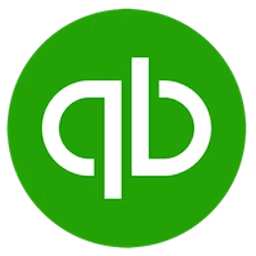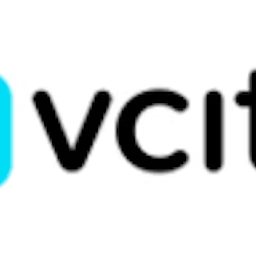Both accounts payable software and accounts receivable software are critical for a business’s financial management ecosystem. The confusion between these two is mostly related to the shared goals of managing financial transactions, often involving invoices and payments.
The question that arises is, as an accounting manager, which one should you choose for your business?
This article discusses the similarities and differences between accounts payable software and accounts receivable software categories, so you can select the right one for your business. For each software category, we’ve included the top five products based on verified software reviews. Read more.
Searching for an accounting firm to hire for your business? We’ve got you covered. Check out our list of companies in the following areas:
What is accounts payable software?
Accounts payable software enables businesses to manage and track the money they owe to other parties, such as suppliers and vendors. The tool automates controlling cash expenditures to improve managing and tracking invoices to reduce effort, capture errors, and generate reports. Accounting, finance, and operation managers use the tool to manage spending, submit and approve purchase orders, process invoices, and track payments to suppliers.
Accounts payable software offers features, including approval process controls, invoice processing, vendor management, audit trail, bank reconciliation, and cash management, among other payable account activities. The tool also integrates with general ledger and can be bundled with other accounting software solutions.
Core features of accounts payable software
The core features of accounts payable software are:
Approval process control: Grant and manage authorization and review of financial transactions before they are approved for payment.
Invoice processing: Create, process, execute, and manage suppliers' invoices till the payment is made to the suppliers and vendors. The feature automates capturing, validating, and routing invoices for payments.
Vendor management: Track and store all vendor-related information, such as contacts, services offered, terms, etc. The feature enables managing and maintaining relationships with suppliers and vendors, including vendor onboarding, communication, and performance monitoring.
5 top-rated accounts payable software
These products are listed in alphabetical order. (Check how we selected them.)
To present the most up-to-date information, the product information below shows the latest real-time ratings, which may differ from the ratings values at the time this report's analysis was conducted, since new reviews may have been left in the meantime.
Trial/Free Version
- Free Trial
- Free Version
Device compatibility
Trial/Free Version
- Free Trial
- Free Version
Device compatibility
Trial/Free Version
- Free Trial
- Free Version
Device compatibility
Trial/Free Version
- Free Trial
- Free Version
Device compatibility
Trial/Free Version
- Free Trial
- Free Version
Device compatibility
What is accounts receivable software?
Accounts receivable software enables businesses to manage and track the money other parties (vendors and suppliers) owe to them. The tool automates recording payments on outstanding invoices. Accounting managers use the tool to manage the cash flow cycle by generating reports on pending payments and monthly statements against customer invoices.
Accounts receivable software offer features, including customer statements, invoice processing, receivables ledgers, and aging tracking, among others. The tool can be used as a stand-alone or integrated accounting solution.
Core features of accounts receivable software
The core features of accounts receivable software are:
Customer statements: Create reports for customers with invoices, payments, and balance on the account.
Invoice processing: Create, process, execute, and manage suppliers' invoices till the payment is received from the suppliers and vendors. The feature automates capturing, validating, and routing invoices for payments.
Receivables ledger: Track and manage a list of customers and their payments due updates on a regular (daily, weekly, or monthly) basis.
5 top-rated accounts receivable software
These products are listed in alphabetical order. (Check how we selected them.)
To present the most up-to-date information, the product information below shows the latest real-time ratings, which may differ from the ratings values at the time this report's analysis was conducted, since new reviews may have been left in the meantime.
Trial/Free Version
- Free Trial
- Free Version
Device compatibility
Trial/Free Version
- Free Trial
- Free Version
Device compatibility
Trial/Free Version
- Free Trial
- Free Version
Device compatibility
Trial/Free Version
- Free Trial
- Free Version
Device compatibility
Trial/Free Version
- Free Trial
- Free Version
Device compatibility
Accounts payable vs. accounts receivable software: How are they similar?
Both accounting statements (accounts receivable and payable ledgers) are part of a business’s accounting balance sheet. One is used to manage and track outbound transactions while the other focuses on inbound transactions. All to maintain cash flow, improve control, and increase productivity by automating invoices and payments.
Accounts payable and accounts receivable software offer similar features, such as ACHAccounts payable vs. accounts receivable software: Which one is right for your business?
The answer to this question depends on your business use cases and financial modeling. If you require a tool to track, manage, and record company debts to suppliers, accounts payable software should be ideal. Accounts payables (AP) are considered a liability to your business. It is the money your business owes on credit purchases of goods and services from a vendor or supplier. When a finance team receives a valid bill for purchases, it is recorded as a journal entry and posted to the general ledger as an expense. On a balance sheet, accounts payables are shown as a current liability.
On the contrary, if you are looking to automate your business's invoicing and collections processes, you would benefit from accounts receivable software. Accounts receivables (AR) are considered a current asset to your business on the balance sheet. It is the money your business collects because it sold goods or services on credit to a customer. When the finance team does not receive a valid bill with the payment, accounts receivables are recorded in the general ledger as a bad debt (contra asset).
Once you’ve decided which software to use, head to our accounts payable software and accounts receivable software category pages where you can find a sortable list of products and software reviews from verified users.
How to choose accounts payable vs. accounts receivable software?
Assess invoicing, tracking, and approval: Look for accounts payable software that simplifies processing invoices and purchase orders, letting you manage multiple approvals and complex workflows. For accounts receivable software, it is essential to let you create and track invoices, send reminders, and handle billing disputes.
Consider payment processing: Payment processing is common in both accounts payable and receivable software. What you need to focus on is multiple payment methods (credit cards, debit cards, ACH, and wire transfer), and integration with the payment processing gateway for secure transactions.
Opt for customer or vendor management: Vendor management should be your focus in the case of accounts payable software as it enables managing vendor information, communications, and transaction history. In the case of accounts receivable software, the feature changes to customer management, where you capture the same insights for your customers so you can analyze payment behavior and trends for maintaining good relationships.
Common questions when selecting accounts payable vs. accounts receivable software
What are the workflow and automation capabilities of the software?
Your selected accounts payable or accounts receivable software should let you simplify and automate workflows, including processing invoices, payment reconciliation, reminders, tracking accounts, and maintaining records. Additionally, you should be able to digitize and centralize all your financial documents (receipts, purchase orders, invoices, etc.) for speedy sharing and approvals.
Does the software integrate with third-party accounting solutions?
Tracking payments and invoices is just one aspect of a business’s accounting process. You need to make sure that your selected software integrates with other accounting software solutions for the accuracy of receivable and payable records and speedy data transfer.
What are security measures to protect the businesses and customers’ financial data?
Learn about the data security measures adopted by the software vendor to protect against cyber attacks. Some features to look out for include encryption for data transfer, access controls for data sharing, data segregation to isolate networks, user authentication to verify before sharing access, and more. Additionally, check if the software adheres to industry regulations (GDPR








